Understanding the REA / Value Flows model: Lynn Foster of Mikorizal (Part 1)

Today Dave Darby of Lowimpact.org / NonCorporate.org is talking with Lynn Foster of Mikorizal and the Value Flows model. We’ve heard some very good things about her work, together with her partner, Bob Haugen.
Dave: I’ve had a look at your websites, and they’re very technical. I want to attempt to translate what you’re doing for a general audience. I’m not a techie – and I think that’s an advantage. I’ve witnessed techies trying to explain things to a general audience, and they usually assume a level of knowledge that’s not there. Is that OK?
Lynn: That’s OK, and I’ll do my best to help, in spite of being a techie.
Having said that, I discovered the Value Flows story about pie – very non-technical. I’ll come back to that. So – tell me what it is that you’re doing.
Bob and I work together, here in Wisconsin, on software that we think will be needed to support experimental / new P2P economic systems, and that eventually will come to be the norm.
What’s the name of the type of tools you’re using? Are they new? Did you invent them? How long have you been doing it?
We’ve been doing it for quite a few years. You mentioned Value Flows. We created software, the most famous of which is probably Network Resource Planning (NRP) – which is like the standard tool for enterprises – Enterprise Resource Planning (ERP) – but for networks.
Are you building a toolkit?
Eventually it could be a toolkit. It needs to be a combination of things – to create something that any developer can plug in software that they want, using the tools and programming languages that they want to use, and that all these parts will talk with each other to create a networked ecosystem of software that could support a networked ecosystem of economic activity.
Does the toolkit require specialised equipment, training or anything out of the ordinary?
Nothing we’re working on is going to require specialised tools, and it will all be relatively easy, we hope.
So what is the toolkit for? Why are you doing it – what are you trying to achieve?
We said that we want to build an operating system for the new economy, and I think that’s the phrase that caught your eye, and put us in contact. It sounds a bit grandiose, and we don’t think that’s just about us, but we think we have some good building blocks for that, and we’d love to work with other people.
So some pieces that might be needed for a new economic operating system. First, a way to figure out how to have an economy that doesn’t destroy nature. What are our limits? What are people’s roles? Some of us are going to have to wind down our consumption. Once we’ve worked out the limits we need to live within to survive, how do we make plans to get us there? But not giant, state-controlled centralised plans, but we’re going to have to do some planning, on a lot of different levels – for example how do we obtain food and water without putting too much carbon into the atmosphere. Food will have to be much more local, along with heavier manufacturing. What’s the right scale for energy projects, transport, manufacturing, agriculture etc?
Who does the planning, if not the state?
It needs to be democratic, but based on a knowledge of reality, rather than on how much money people have. We also need to have some way of coordinating our economic activity with each other, and to keep records that will be useful in planning. And then there will be feedback loops. Plans don’t last very long before something goes wrong, so there need to be feedback loops, re-planning, more co-ordination. Also, I don’t know how much we need to plan rather than to respond to demand within natural constraints.
And we’ll need some sort of accounting to be able to analyse the data, to figure out what we need to do better. We’ve been working with a model called REA (resource, events, agents), which is becoming a little more well-known. It started in academia, in the early 80s – a guy named Bill McCarthy. Bob and I have been working with it, trying to make it more implementable. It works well.
So a way to think about everything I’ve mentioned is via resource flows. Using this model, you can connect resource flows through various activities in the economy. For example in the food sector – if someone gets food poisoning, you can track back to the source of various foods, and track forward again to see who else ate it, and if they got sick too. It can also be used to find the quality of food – so that restaurants can show customers that their food was produced locally and sustainably. It just provides a way to show the resource flows through the economy and to see what needs to change.
So it’s an accounting system that accounts for much more than just money?
Yes. Maybe money is required, maybe it isn’t, but it’s definitely about more than money.
And that might include things of real value like sustainability, democracy in the workplace, co-operation etc?
Definitely. Health too. We were having an interesting conversation recently with a group about that – but also material resources. How much food does my region need/produce, and can we get it – can we feed Chicago, for example?
I was reading the other day that the UK imports 60% of its food. So if there’s some sort of crash that affects the transport / distribution system, we’re in big trouble.
So – if you had to label what you do, is it REA accounting?
Sure – you could say that. It’s a cleaned-up version of old style accounting taken to a place where you can network, so that it doesn’t matter where one business ends and another one starts. It can be taken across groups. It has a pattern of inputs and outputs, so that an output can become an input for another process; plus it has transfer mechanisms to account for things that are given or exchanged.
When it comes to implementation, Is REA accounting only for technical people?
Right now, yes. Eventually groups will be able to build suites of apps based on what they need. It will be a partnership. Part of our job now is to work with people trying to do practical things on the ground. We’d like to make it much more intuitive, and to build REA into the language, so that non-developers can think about it at a not-so-deep level. The value flows vocabulary I’ve been working on is intended to tie these things together in ways that are real, and standard.
What’s more challenging – working with software or people?
I think I’ll go with people. We’re so complex, and so embedded in capitalism. There are a lot of challenges there, to get to a place where we can work together and collaborate, and get rid of some of that ‘me first’ stuff that we all have.
My focus is on a) bringing people in to the new economy, and b) linking up people working (often in silos) in the new economy. Both are difficult. Who do you want to reach with this? Who can benefit from your work right now, and how can they adopt it?
They can contact us directly, via the Mikorizal website. We’re working with several projects – some of them are developer groups, some are user groups. We’ve worked with various systems based on REA with specific groups. We’ve used that experience to try to develop value flows, and were influenced by a group who call themselves the Open App Ecosystem, who are trying to develop distributed software and smaller apps, rather than the giant corporate platforms and surveillance capitalism.
I’m struggling to see how it works / how it can be adopted – but I think I understand the concept more – in that I’m sure fishermen don’t want to destroy fish stocks, and I’m sure farmers don’t want to kill bees and erode soil – but those things are happening because they’re not accounted for. Your system accounts for it? Is that right?
It certainly can account for all externalities. You mentioned fish, and that reminded me that a few years ago we worked with a group in Nova Scotia. There were giant trawlers that rake the sea bed and destroy it, but they can get fish more cheaply than the small fishermen who fish sustainably. They were able to map out some amazing stuff, using data from the government, even though the externalities are hard to get – for example, there’s no data on how badly the fishing beds are being destroyed. But there’s data to show that North Atlantic fish is being sent to China to be filleted before being sent back to Nova Scotia for sale – which is ecologically insane.
What happens to the data that’s collected? Is it made available to the public so that they can make decisions about their shopping habits, or does it affect prices somehow? How does it affect the real world?
Right now it affects the real world in very small ways. We’ve worked with small groups. There’s a lot of work to be done, and there’s a lot of potential. There’s one large group in Europe working on circular economy stuff with several pilot cities, that could be pretty interesting. But right now, we’re dabbling and getting experience, trying to figure out how to do things in a non-Facebook, non-Google, non-giant platform sort of way.
Our opinion is that the data should be open – or at least most of it. Software too. If we want to build something alongside what exists now (but different), I think that’s pretty fundamental.
Could the data be manipulated so that a company can tweak it to make it look as though their processes are more sustainable than they actually are, for example?
I don’t know yet. There’s a lot of discussion about trust, and trustless software, starting with the blockchain. I don’t know exactly where the balance should be, but there are a lot of people working on how to make the data secure and untamperable. I don’t know yet, but I hope we can work out a balance.
Does your work benefit small businesses / co-ops in particular, or could corporations use it to their advantage too?
Possibly they could. But there are a lot of different types of co-operative – worker, consumer, multi-stakeholder, as well as all the other kinds of community-based organisations, and so it’s an opportunity to start to connect those kinds of organisations together.
Could you just say a bit more about REA accounting, and what it means, exactly? How are resources, events and agents linked together, and how is it different from conventional accounting?
Conventional accounting has credits and debits. Computers gave us the possibility of not having to do accounting that way, where you were keeping those balances. REA accounting starts with recording what happens. What happens is an event. An event can create a resource, or make more of a resource, it can consume some or all of a resource, it can borrow a resource, without using it up, it can maintain, restore or fix a resource. Events are what put resources in motion. Agents are people or organisations, or groups of any kind that have agency. An event usually has an agent that’s a provider and an agent that’s a receiver. A simple event you can think of is me giving you some cookies. I’m the provider agent, you’re the receiver agent – in an event that transferred cookies from me to you. That was the event, the resource and the agents.
We have something called processes – that have input events and output events. That’s a way that production and creation happens. The input might be some work, or it might be some components, or a piece of equipment that’s been borrowed, or someone’s design that you might want to cite. This can all be recorded at the planning level or the work level, and you can use it for budgeting, or for higher-level analysis – it’s all the same REA pattern.
Can it be used in all sectors of the economy, or are there sectors that it just wouldn’t work in?
I think it can be used in every sector of the economy. And if it can’t, we should make it so. We really need this simple model to link everything together.
Do you get paid by clients, or do you get funding, or is it pro bono?
For Bob and me, it’s all pro bono. We’re retired and we have pensions. We’ve moved to the country where we can live relatively cheaply and sustainably.
Is it fun?
Oh yeah – it’s super fun. It’s wonderful being able to work together. I can’t imagine working alone. We complement each other. We work a lot, but we work at a comfortable pace. We don’t punch any clocks. We work, we talk, we work things out, we do chores etc.
Highlights:
- We’re going to have to do some planning, on a lot of different levels – for example how do we obtain food and water without putting too much carbon into the atmosphere. Food will have to be much more local, along with heavier manufacturing. What’s the right scale for energy projects, transport, manufacturing, agriculture etc?
- We’ll need some sort of accounting to be able to analyse the data, to figure out what we need to do better. We’ve been working with a model called REA (resource, events, agents), which is becoming a little more well-known.
- If groups / networks are interested in finding out more, and potentially adopting it, contact us directly.
The views expressed in our blog are those of the author and not necessarily lowimpact.org's
3 Comments
-
1Kim Cosmos January 18th, 2021
I can’t understand why Lynn is reinventing the wheel. The USA has the OAGIS system and the rest of the world uses UBL for network resources planning. Both systems evolved from the same model Sensorica uses. The Mikrorizal network have terrible trouble escaping their bubble as any who say they are not original are ostracised. Their original parts are their potential extended contracts. This is an inversion of control of the enterprise resource model. Imagine everyone in a big business being an independant contractor and you’ve got it. Their group contracts are designed only to resolve on sale. This is the same as VAT tax refund resolution by the IRS and the provenance of ‘Fair Trade’. Those micro contracts are all good stuff but their insistence on inventing a new language instead of using the Universal Business Language means they can’t use existing UBL blockchain contract tools. They are cutting themselves off from using all the existing powerful tools whilst congratulating each other about how unique they are. All they would need to do is add an extra currency (eg. hours). If I sound bitter its because ideologues always accuse outsiders (me) of not understanding and tell them to stop being a kill joy. Maybe I should fire up Riot again and see if I can contact Lynn directly. She is not easy to reach. NRP is supply chain management. No need for jargon. Their cascading micro contracts are what make it interesting
-
2Lynn Foster January 20th, 2021
Kim Cosmos, have I met you? You seem quite personally irritated to say the least. Re. contacting me, feel free to use the email at the bottom of every page in http://mikorizal.org, and I will respond.
-
3bhaugen January 20th, 2021
For the record, two short histories:
About reinventing wheels:
MRP reinvented manual inventory management practices in the 1950’s,
because now we had computers.
REA reinvented accounting in 1979, abandoning debits and credits which
were based on paper-based bookkeeping systems, because now we had
computers.
ERP systems started out being called MRPII because they combined
MRP-based inventory management with accounting apps based on
paper-based bookkeeping systems.
The NRP project with Sensorica combined MRP-based resource flow
management with REA-based economic event management to focus on
resource flows in networks instead of inventory-at-rest in companies,
because we now had computer networks.
Valueflows is based on that whole series of reinventions. Value flows
did not reinvent anything itself.
And blockchains reinvented both financial settlement systems and
distributed consensus protocols.
About REA and UBL:
People from both projects met in http://www.ebxml.org/ in 2001
and then went in different directions.
UBL spun off in September of that year. Bill McCarthy of REA was invited to
this ISO committee https://www.iso.org/committee/45342.html where REA
eventually got incorporated into this standard:
https://www.iso.org/standard/67199.html
ISO committee https://www.iso.org/committee/45342.html where REA
eventually got incorporated into this standard:
https://www.iso.org/standard/67199.html




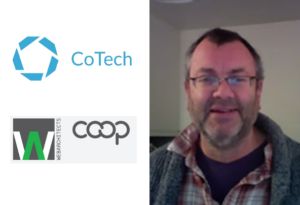 Co-operativising the tech sector: an interview with Graham Mitchell of Webarchitects & CoTech
Co-operativising the tech sector: an interview with Graham Mitchell of Webarchitects & CoTech
 How the viable system model (VSM) can help build a new economy: Trevor Hilder of Web of Wealth
How the viable system model (VSM) can help build a new economy: Trevor Hilder of Web of Wealth
 Does anybody fancy a free, one-day course on the viable system model (VSM)?
Does anybody fancy a free, one-day course on the viable system model (VSM)?
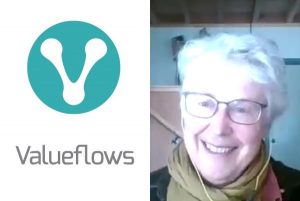 How the REA / Value Flows model can change the world: Lynn Foster of Mikorizal (Part 2)
How the REA / Value Flows model can change the world: Lynn Foster of Mikorizal (Part 2)
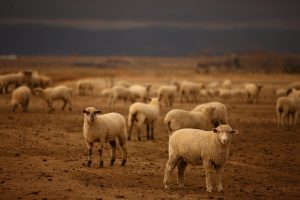 New topic – ‘commoning’ – and why ‘the Tragedy of the Commons’ is wrong
New topic – ‘commoning’ – and why ‘the Tragedy of the Commons’ is wrong
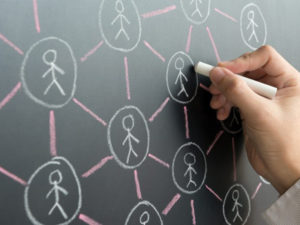 Co-operatives
Co-operatives
 Commoning
Commoning
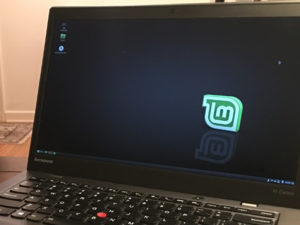 Free & open source software
Free & open source software
 Low-impact IT
Low-impact IT
 Commons economy
Commons economy
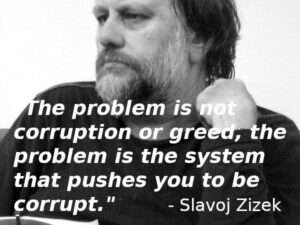 System change
System change
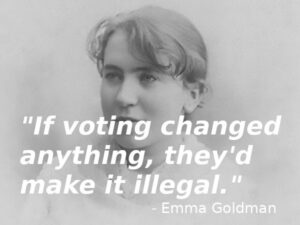 The 'democracy problem'
The 'democracy problem'


